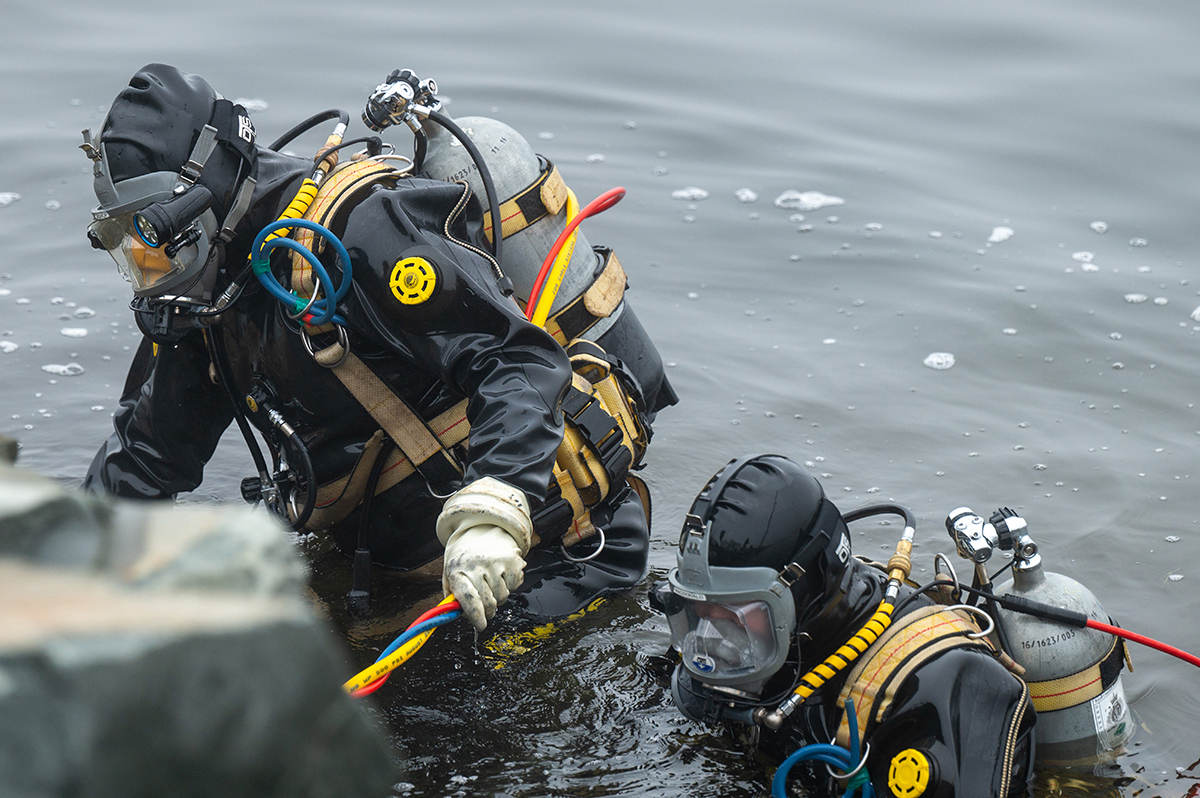**** RCMP Media Release
Diver discovery solves decades-old disappearance of Nova Scotia woman (Update)

Diving in the chilly waters off Nova Scotia’s coast, the RCMP Underwater Recovery Team (URT) didn’t expect to find a car.
The second submerged car was an even bigger surprise.
Officers then remembered the disappearance of Arlene McLean from Eastern Passage, N.S. She had gone for an evening drive in September 1999 and vanished without a trace. At the time, investigators searched the area and interviewed friends, family and witnesses without success. For years to come they continued to follow up on leads coming from all across North America to no avail.
Now, after more than 20 years of mystery, investigators have solved the case.
Finding a match
Back in 2018, when RCMP Cpl. Troy Murray took over the missing person’s case, URT began periodic dives in locations where police suspected McLean could have gone missing — but nothing materialized. It wasn’t until an unrelated operation in October 2020 that RCMP divers spotted two sunken cars that matched the make of McLean’s vehicle. Divers determined the first car wasn’t a match, but winter conditions prevented further work.
In April 2021, URT was back in the coastal waters examining the second vehicle. When URT diver Cst. Pierre-Olivier Janelle read the car’s licence plate over the radio, Murray couldn’t believe his ears. The plate matched McLean’s.
“I was shocked. I had invested so much of my time into this investigation,
” says Murray, an RCMP investigator with the Major Crimes Unit in the Halifax district. “It was exciting, but my mind quickly switched to what steps we needed to take to make sure we investigate this properly.
”

Collecting evidence under water
Officers began the painstaking recovery process of collecting and cataloguing evidence in and around the submerged car. Officers decided to complete a subaquatic search before extracting the car to preserve the integrity of the vehicle.
One of the challenges for the diving investigators was the accumulation of ocean silt that, over two decades, had filled the vehicle.
“As soon as you touch the silt, it’s like a cloud. You lose all vision,
” says Janelle, who made multiple dives to the vehicle.
Unfavourable water conditions added to the dive’s challenges, as the car was located nine meters deep near an underwater channel rushing with cold, ocean water.
“When the water is running on you, you get the same feeling as a wind chill,
” says Janelle. “Sometimes you can’t do anything anymore because your fingers are numb.
”
But, at times, the rushing water also helped the divers.
“At some points in the day, the current swept that dirty water away so it worked a little to our advantage,
” says Sgt. Mark Bishop, the URT co-ordinator in Nova Scotia who’s worked with the dive team for more than 16 years.
Over the course of multiple dives, sometimes lasting up to 90 minutes, divers removed the silt one handful at a time, and collected evidence from the car.
“It’s not as easy as on the ground, where you can bring the investigators in and say, ‘Hey, this is what we’re looking at here.’ Under water, we have to do all that ourselves and re-tell the story to investigators for them to understand the puzzle,
” says Janelle. “It all had to be done in a controlled manner because custody of evidence is important and at the time we hadn’t ruled out criminal conduct.
”
The URT spent eight days making 37 dives, totalling over 30 hours under water. During the search, divers uncovered clothing, human remains, and other key pieces of evidence related to the investigation.
Completing the puzzle
After the search inside the car was complete, a crane lifted the vehicle from the ocean and allowed officers to get a better picture of what happened.
“In the salt-water marine environment, things like steel cars don’t last long, but luckily for us it raised all in one piece,
” says Bishop.
Officers investigated the vehicle and reviewed all the evidence to determine what might have happened.
“Although we can’t definitively determine the events that occurred between Ms. McLean leaving her home and ending up in the water, what we can say with some comfort is we don’t think anyone else was involved,
” says Murray.
When police were confident they had recovered McLean’s vehicle and remains, Murray reached out to her family to share the news.
“I know it had quite an impact on the family. After all these years, it was a very emotional experience for them,
” he says.
While the timeline of historical cases can create significant challenges for investigators, RCMP officers across the country are dedicated to solving these cases and helping families find closure.



